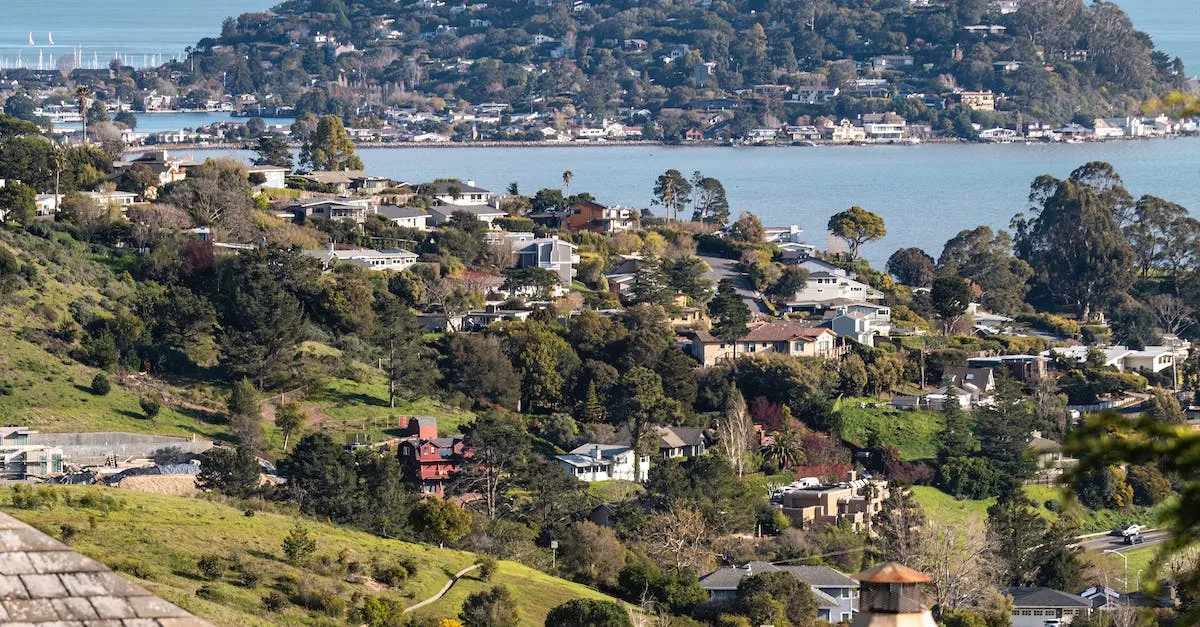Santa Clara Vs San Francisco: How Do These Neighboring Cities Compare?
Located just 45 miles apart in California’s Bay Area, Santa Clara and San Francisco are two major cities known for technology, entertainment, and diverse communities. But how exactly do these neighboring cities stack up against each other?
If you’re short on time, here’s a quick answer: While Santa Clara boasts a suburban feel near Silicon Valley’s tech campuses, San Francisco offers urban living with world-famous attractions and a bustling downtown.
This in-depth guide will compare and contrast Santa Clara vs San Francisco across categories including population, job industries, housing, weather and climate, education, transportation, amenities, and more. Whether you’re considering a move or just want to learn about the distinct flavors of the Bay Area, keep reading for insights into what makes each of these cities unique.
Demographics and Housing
Population Statistics
Santa Clara and San Francisco, two neighboring cities in California, have distinct differences when it comes to their population statistics. Santa Clara, with a population of approximately 130,000, is smaller in comparison to San Francisco, which boasts a population of over 880,000.
The population density in San Francisco is significantly higher due to its smaller land area and higher population. However, Santa Clara’s population has been steadily growing in recent years, thanks to its thriving technology industry and proximity to Silicon Valley.
According to the U.S. Census Bureau, the population of Santa Clara has increased by 10% since 2010.
Home and Rental Prices
When it comes to housing, both Santa Clara and San Francisco face challenges, but with different price tags. San Francisco is notorious for its high cost of living and sky-high housing prices. The median home price in San Francisco is well above the national average, making it one of the most expensive cities in the United States to own a home.
Rental prices in San Francisco are also exorbitant, with the average monthly rent for a one-bedroom apartment reaching over $3,500.
In contrast, Santa Clara offers a more affordable housing market, although still above the national average. The median home price in Santa Clara falls below that of San Francisco, making it a more feasible option for homeowners.
Rental prices in Santa Clara are also lower compared to its neighbor, with the average monthly rent for a one-bedroom apartment being around $2,500.
It’s important to note that these prices are subject to change and may vary depending on factors such as location, size, and amenities.
For more detailed and up-to-date information on housing prices in Santa Clara and San Francisco, you can visit websites such as Zillow.com or Realtor.com.
Employment and Economy
Major Employers
Santa Clara and San Francisco are both bustling cities with a strong employment base. In Santa Clara, major employers include tech giants like Intel, Nvidia, and Applied Materials. These companies contribute significantly to the city’s economy and provide job opportunities for thousands of residents.
San Francisco, on the other hand, is known for its thriving startup scene. Companies like Uber, Airbnb, and Salesforce have their headquarters in the city, attracting top talent and fueling innovation.
When it comes to major employers, both cities offer diverse opportunities in different sectors. Santa Clara’s focus on technology and manufacturing makes it a hub for engineering and research, while San Francisco’s startup ecosystem provides opportunities for entrepreneurs and those seeking fast-paced, dynamic work environments.
Income and Wages
Both Santa Clara and San Francisco are known for their high cost of living, but they also offer competitive wages. In Santa Clara, the median household income is around $130,000, which is significantly higher than the national average.
This can be attributed to the presence of high-paying tech companies in the area.
San Francisco, on the other hand, has an even higher median household income of over $150,000. The city’s thriving tech industry, coupled with its financial services sector, contributes to the high earning potential for residents.
However, it’s important to note that the high cost of living in both cities can offset the higher wages.
According to the U.S. Bureau of Labor Statistics, the average weekly wage in Santa Clara County is $2,180, while in San Francisco County, it is slightly higher at $2,450. These figures demonstrate the strong economic growth and high wages that both cities offer.
It’s worth noting that while these statistics provide a general overview, individual experiences may vary. Factors such as education, industry, and experience can affect an individual’s earning potential in both cities.
Comparison
| Santa Clara | San Francisco | |
|---|---|---|
| Major Employers | Intel, Nvidia, Applied Materials | Uber, Airbnb, Salesforce |
| Median Household Income | $130,000 | $150,000 |
| Average Weekly Wage | $2,180 | $2,450 |
Weather and Climate
Average Temperatures
When comparing the weather and climate of Santa Clara and San Francisco, it’s important to note that they are both located in the San Francisco Bay Area and experience similar mild and Mediterranean climates. However, there are slight differences in average temperatures between the two cities.
In Santa Clara, located in the heart of Silicon Valley, the average temperatures range from highs of around 70°F (21°C) in the summer to lows of around 50°F (10°C) in the winter. The city enjoys a relatively warm and sunny climate throughout the year, with mild fluctuations in temperature.
On the other hand, San Francisco, known for its iconic fog and cool summers, has slightly cooler average temperatures compared to Santa Clara. The city’s average highs range from around 60°F (15°C) in the summer to lows of around 45°F (7°C) in the winter.
The cool ocean currents and the influence of the fog contribute to the unique microclimate in San Francisco.
Precipitation
When it comes to precipitation, both Santa Clara and San Francisco receive relatively low amounts compared to other parts of the United States. However, there are noticeable differences in the distribution of rainfall between the two cities.
Santa Clara experiences a dry Mediterranean climate with most of its rainfall occurring during the winter months. The city receives an average of around 15 inches (38 cm) of rainfall annually, with the majority of it falling between November and March.
San Francisco, on the other hand, has a more evenly distributed rainfall throughout the year due to its proximity to the Pacific Ocean and the presence of fog. The city receives an average of around 20 inches (51 cm) of rainfall annually, with the fog often contributing to the moisture in the air.
It’s worth noting that these are just average temperatures and precipitation levels, and there can be variations from year to year. Therefore, it’s always a good idea to check the weather forecast before planning any outdoor activities in either city.
Education and Transportation
School Systems
When it comes to education, both Santa Clara and San Francisco offer excellent school systems that prioritize the academic growth and development of their students. In Santa Clara, the primary school district is Santa Clara Unified School District, which is known for its high-quality education and diverse student body.
The district offers a wide range of educational programs and extracurricular activities to cater to the needs and interests of its students.
On the other hand, San Francisco boasts a strong school system as well. The San Francisco Unified School District is one of the largest urban school districts in California and is committed to providing a well-rounded education to its students.
The district focuses on fostering creativity, critical thinking, and social-emotional development.
Both cities also have a number of private schools that offer alternative educational options. These schools provide a personalized learning environment and often have smaller class sizes.
Public Transit Options
When it comes to public transportation, San Francisco has a well-developed and extensive network that is known for its efficiency and convenience. The San Francisco Municipal Transportation Agency (SFMTA) operates buses, trams, and the iconic cable cars, making it easy for residents and visitors to navigate the city.
The Muni system covers a wide area, connecting different neighborhoods and providing reliable transportation options.
Santa Clara, on the other hand, has a smaller public transit system compared to San Francisco. The main provider of public transportation in Santa Clara is the Santa Clara Valley Transportation Authority (VTA).
The VTA operates buses and light rail services, offering transportation options within the city as well as connections to neighboring areas.
It is worth noting that both cities are constantly working to improve their public transit systems. San Francisco is known for its innovative projects, such as the Central Subway and Transbay Transit Center, which aim to enhance transportation options and alleviate congestion.
In Santa Clara, there are ongoing efforts to expand the light rail system and improve bus services.
Amenities and Lifestyle
Dining and Nightlife Scenes
Both Santa Clara and San Francisco offer a vibrant dining and nightlife scene, although they differ in terms of size and variety. San Francisco, being a larger city, boasts a wider range of culinary options, from Michelin-starred restaurants to trendy food trucks.
The city is renowned for its diverse cuisine, including Chinese, Italian, Mexican, and many more. Visitors and locals alike can enjoy a night out in the lively neighborhoods of the Mission, North Beach, or the famous Fisherman’s Wharf.
In contrast, Santa Clara, while smaller in size, still has its fair share of excellent dining establishments. The city is particularly known for its vibrant Asian cuisine, with a plethora of authentic Vietnamese, Korean, and Japanese restaurants.
Additionally, Santa Clara is home to some fantastic farm-to-table eateries, where visitors can savor fresh, locally sourced ingredients.
When it comes to nightlife, San Francisco undoubtedly takes the lead. The city offers an eclectic mix of bars, clubs, and live music venues that cater to every taste. From trendy cocktail bars in the Financial District to the vibrant clubs of the SoMa district, there’s something for everyone in San Francisco’s nightlife scene.
In Santa Clara, the nightlife is more low-key, with a focus on cozy pubs, sports bars, and live music venues where locals gather to unwind and socialize.
Recreation and Culture
Both Santa Clara and San Francisco offer a wealth of recreational activities and cultural experiences that cater to residents and tourists alike.
San Francisco is famous for its iconic landmarks and cultural institutions. Visitors can explore the Golden Gate Park, home to the de Young Museum and the California Academy of Sciences. The city also boasts world-class museums such as the San Francisco Museum of Modern Art and the Asian Art Museum.
Additionally, San Francisco is a hub for performing arts, with renowned theaters like the War Memorial Opera House and the Curran Theatre.
Santa Clara, on the other hand, has its own unique charm. The city is home to numerous parks and outdoor spaces, including the beautiful Central Park and the serene Ulistac Natural Area. Sports enthusiasts can catch a game at Levi’s Stadium, where the San Francisco 49ers play their home games.
Santa Clara is also known for its rich history and cultural heritage, with attractions such as Mission Santa Clara de Asís and the Triton Museum of Art.
Conclusion
With its dynamic urban energy and iconic landmarks, San Francisco offers big city living at its best. Meanwhile, Santa Clara provides a scenic suburb environment paired with Silicon Valley innovation.
If proximity to tech campuses is a priority, Santa Clara and its comfortable neighborhoods can’t be beat. But for those craving vibrant neighborhoods and famous attractions, San Francisco brings all the excitement of a world-class metropolis.
The Bay Area is large enough for both suburban and urban lifestyles. By choosing the city that aligns with their priorities, residents can enjoy the best of both worlds.








